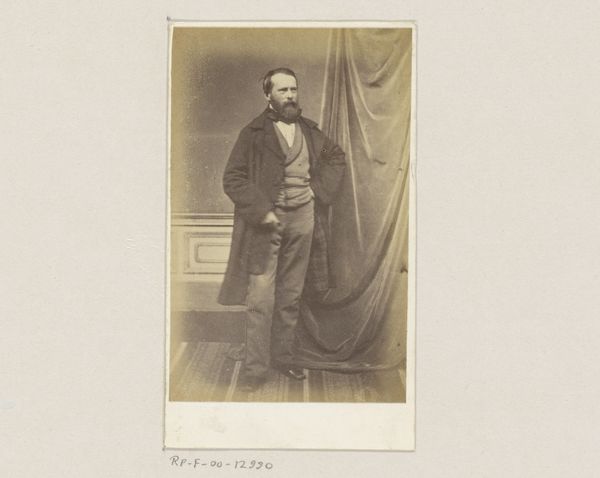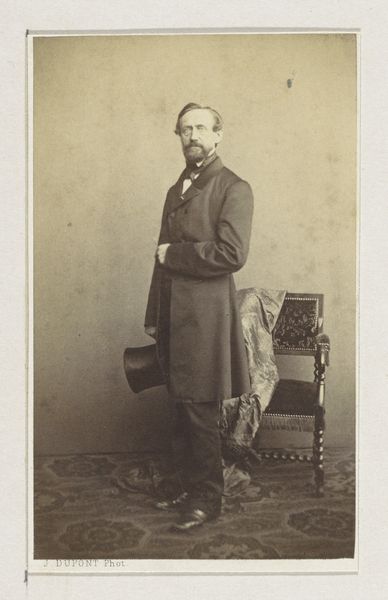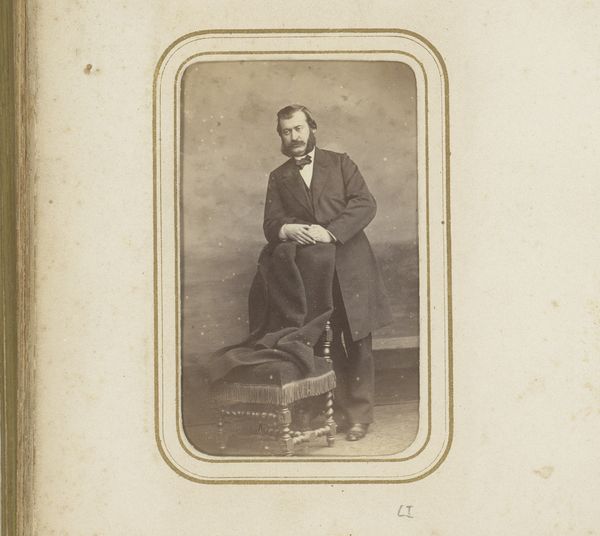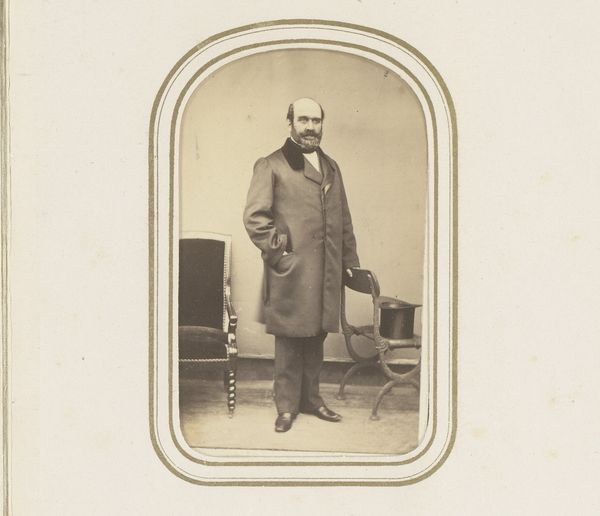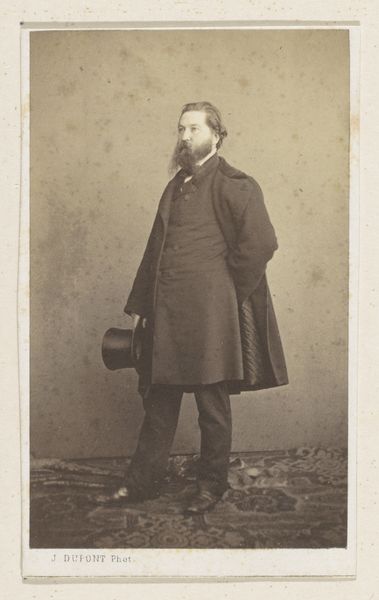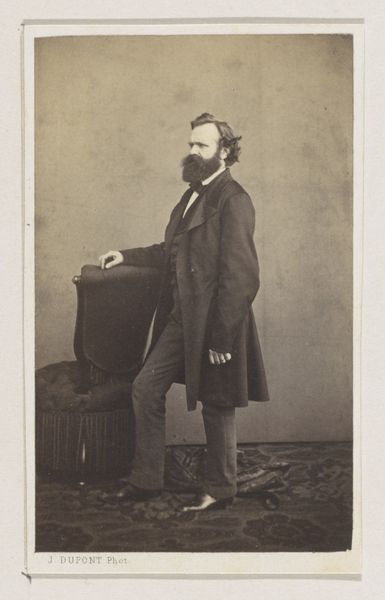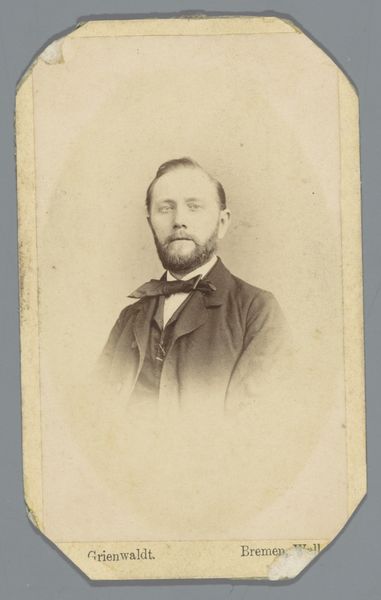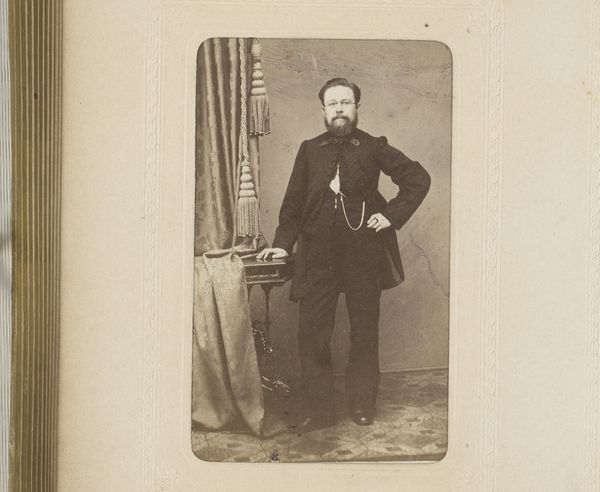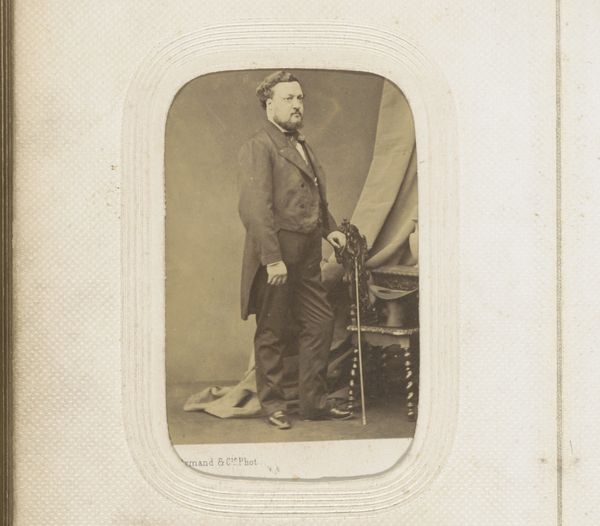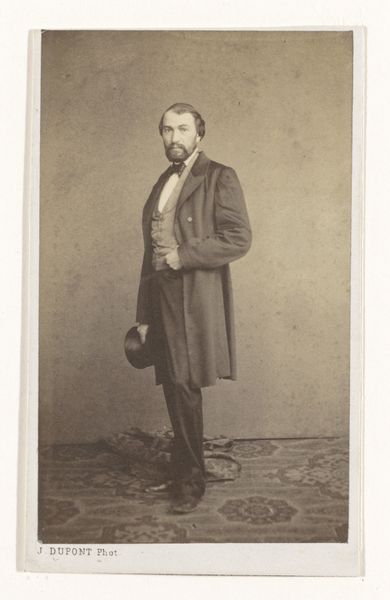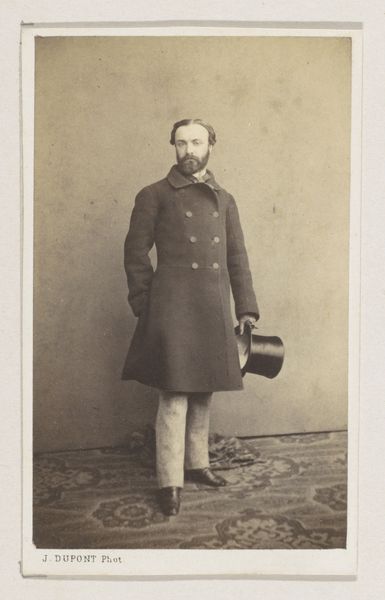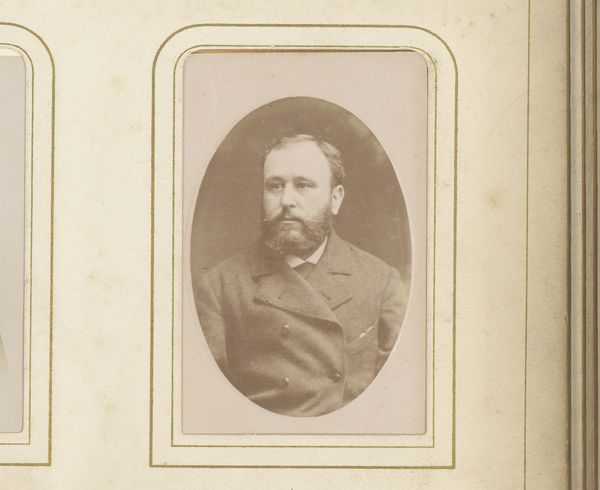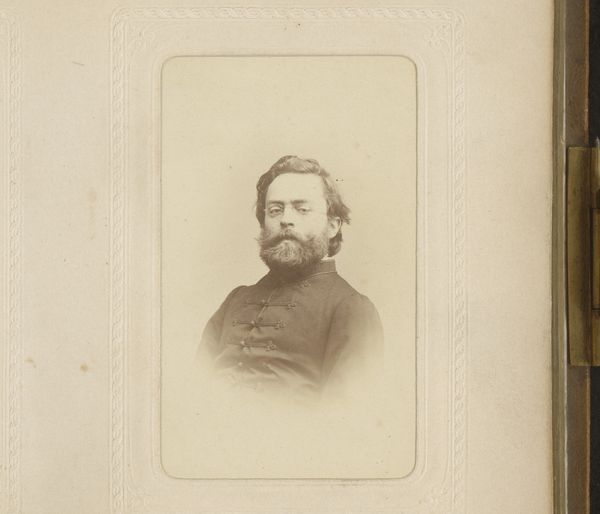
photography
#
photography
#
realism
Dimensions: height 81 mm, width 52 mm
Copyright: Rijks Museum: Open Domain
Curator: This striking photographic portrait, titled "Portret van een man met hoge hoed in de hand," was captured sometime between 1850 and 1900 by the artist J. Bohrlen. Editor: There’s an incredible stillness to this image; an almost somber quality. He seems caught between worlds, holding that hat almost as if it’s weighing him down. Curator: That hat—the high hat—carries so much symbolic weight of its own, doesn't it? In the 19th century, the high hat functioned as a clear signal of bourgeois identity. Class aspirations crystallized through clothing. His averted gaze tells another story, though. Editor: Exactly! His posture is rather stiff. He seems to represent how class and status often force one into molds—those hats become symbols of conformity, not necessarily success or freedom. Curator: Yes, his subtle tension between pose and expression embodies a broader theme. He's positioned against a faux backdrop, a staged landscape; it highlights how artifice attempts to overlay 'natural' hierarchies. Editor: A hierarchy where one can literally purchase the symbolism of freedom within constraints; it speaks volumes about what portraiture sought to capture. Curator: Considering the period—amidst various political revolutions and shifting social tides—one wonders what it truly cost him to maintain that symbol of success. Editor: It challenges us to consider the true cost of maintaining these types of structures, when certain sartorial choices might reinforce social barriers, despite personal anxieties about belonging within certain echelons of society. The image seems, poignantly, to want to reveal its subjects inner realities, more so than his material wealth. Curator: Well said, the contrast between societal projection and inner experience definitely gives one a pause. This image opens a portal into considering the lived realities of people in previous generations. Editor: This portrait's enduring message lies precisely in this capacity: that each generation deserves to excavate and reassess those historical complexities.
Comments
No comments
Be the first to comment and join the conversation on the ultimate creative platform.
